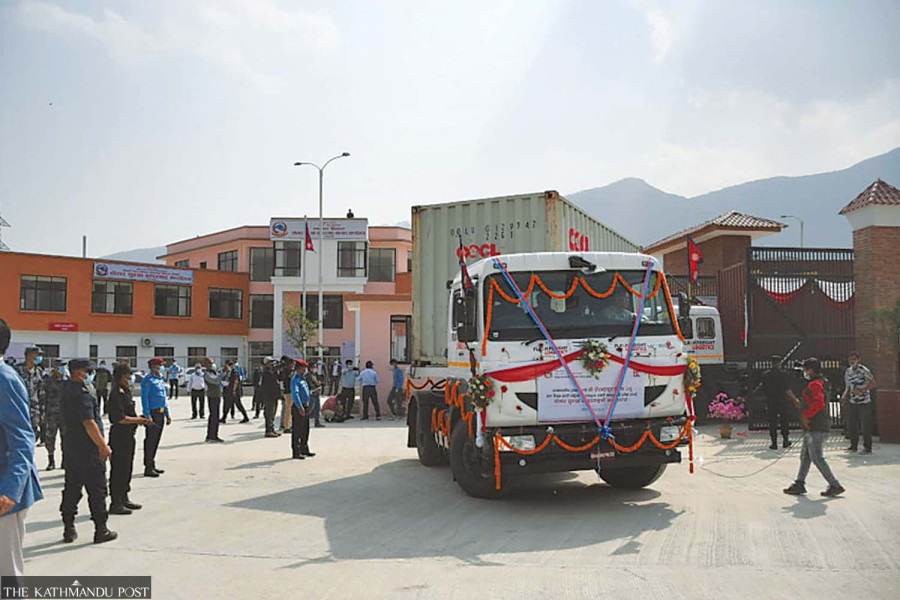Money
Government invites private sector to operate Chobhar dry port
The state-owned Nepal Intermodal Transport Development Board, which currently operates the Chobhar dry port, says the facility will be given to the private sector for five years.
Krishana Prasain
The process to bring onboard the private sector to operate Chobhar dry port has moved a step forward, more than a year after it came into operation.
The state-owned Nepal Intermodal Transport Development Board, which currently operates the Chobhar dry port, said the facility will be given to the private sector for five years.
On Monday, the board published a notice inviting potential bidders to operate the dry port located in the southwestern corner of Kathmandu Valley. It is spread over an area of 11.77 hectares.
The dry port was inaugurated on April 5 last year by the then Prime Minister Sher Bahadur Deuba.
The dry port or inland clearance depot allows importers to make customs clearance of their goods in Kathmandu itself, saving them trips to the various border checkpoints from where their shipments enter Nepal.
“There have been a good number of inquiries from the private sector. We are expecting to receive a large number of proposals,” said Ashish Gajurel, executive director of the Nepal Intermodal Transport Development Board.
“Once we receive the proposals, it will take at least four months to do the technical and financial evaluation of the bid documents to shortlist the bidders,” said Gajurel.
The dry port foundation was laid on January 18, 2019. It was constructed at a cost of Rs1.54 billion through a loan from the World Bank.
A 35,000 square feet parking area has been constructed for 500 containers and 500 trucks.
The dry port has three buildings and houses—customs, a quarantine office, a security office, three warehouses and a stuffing shed [storage].
The facility will be leased out under the Terminal Lease Out Regulation 2013 of the Nepal Intermodal Transport Development Board.
The board will act as a regulatory body.
“It is a public-private-partnership approach,” Gajurel said.
Chobhar dry port is divided into two sections—export-import and domestic. The export-import section can accommodate 116 20-foot equivalent units (TEUs), an inexact unit of cargo capacity often used for container ships.
Currently, out of seven dry ports in the country, six are operated and managed by the private sector, the board said.
The Chobar dry port has been receiving only two vehicles for customs clearance daily.
There are 34 new cars at the parking area for customs clearance,” Gajurel said.
“It’s true that the business is low as compared to other dry ports,” he said. “But the completion of the Kathmandu-Tarai expressway will add value to it and make it vibrant.”
The board operated the dry port for around 15 months.
According to the Department of Customs, exports from Chobhar dry port increased to Rs14.42 million in the last fiscal year from Rs5.57 million in the fiscal year 2021-2022.
The import from Chobhar dry port increased to Rs642.30 million in the last fiscal year against Rs98.87 million a year earlier.
Around 70 percent of all imported goods are consumed in the Valley and the operation of the dry port is seen as a big respite for traders importing goods for sale in Kathmandu once the expressway also comes into operation, said Gajurel.
In the last fiscal year, Nepal’s foreign trade was valued at Rs1.76 trillion.




 7.12°C Kathmandu
7.12°C Kathmandu















